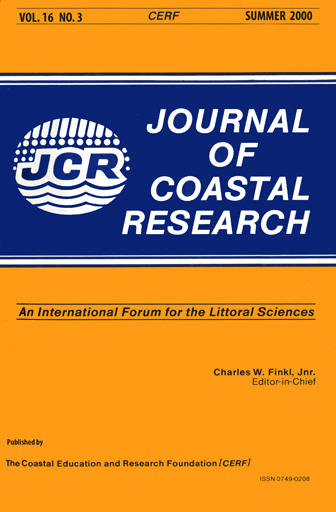Use of SEM/EDS and X-ray Diffraction Analyses for Sand Transport Studies, Lake Erie, Ohio
Keywords:
Tracers, sand transport, SEM/EDS, X-ray diffractionAbstract
Natural tracers offer advantages over artificial tracers because larger volumes can be studied over longer time intervals. However, natural tracers present their own set of problems, including non-uniform starting conditions due to variation within the tracer population, dilution by mixing, and abrasional destruction of the grain characteristic. A beach nourishment project in Lake Erie used about 7000 m3 of sand that was found to have a distinctive iron rich clay coating on quartz sand grains. The sand was uniquely introduced, because it came from a quarry 15 km inland and had not been used for other beach nourishment projects in the region. Experiments were undertaken to identify the coating, assess the hydraulic equivalence of the tracer sand to native beach sand, and to determine the resistance of the grain coating to abrasion. Results indicate the sand behaved as a natural tracer that was detectable for approximately 2.5 years after introduction. Plume centroid migration rates averaged 2.45 mday-1 westward during the first 20 months of the study. Eventual dissipation of the tracer plume (due to mixing and abrasional loss of the coating) resulted in an apparent reversal of the plume migration direction.


